Vegan Globetrotter is supported by our audience. When you purchase through one of our links, we may earn a small affiliate commission. As an Amazon Associate I earn from qualifying purchases. Your cost is not affected.
==================
The Vegan Mediterranean Buddha Bowl brings together the vibrant flavors of the Mediterranean in a wholesome, plant-based package. Picture a dish that delights your taste buds while nourishing your body with every bite. Packed with fresh vegetables, protein-rich legumes, and a medley of spices, this bowl transcends mere sustenance—it’s an experience. Whether you’re a long-time vegan or exploring healthier eating options, this guide will walk you through crafting the perfect bowl that delights your palate and well-being. Embark on this flavorful adventure with us to uncover how a wholesome, nutritious meal can elevate your dining experience and revitalize your lifestyle.
Vegan Mediterranean Buddha Bowl: Healthy and Flavorful Recipe
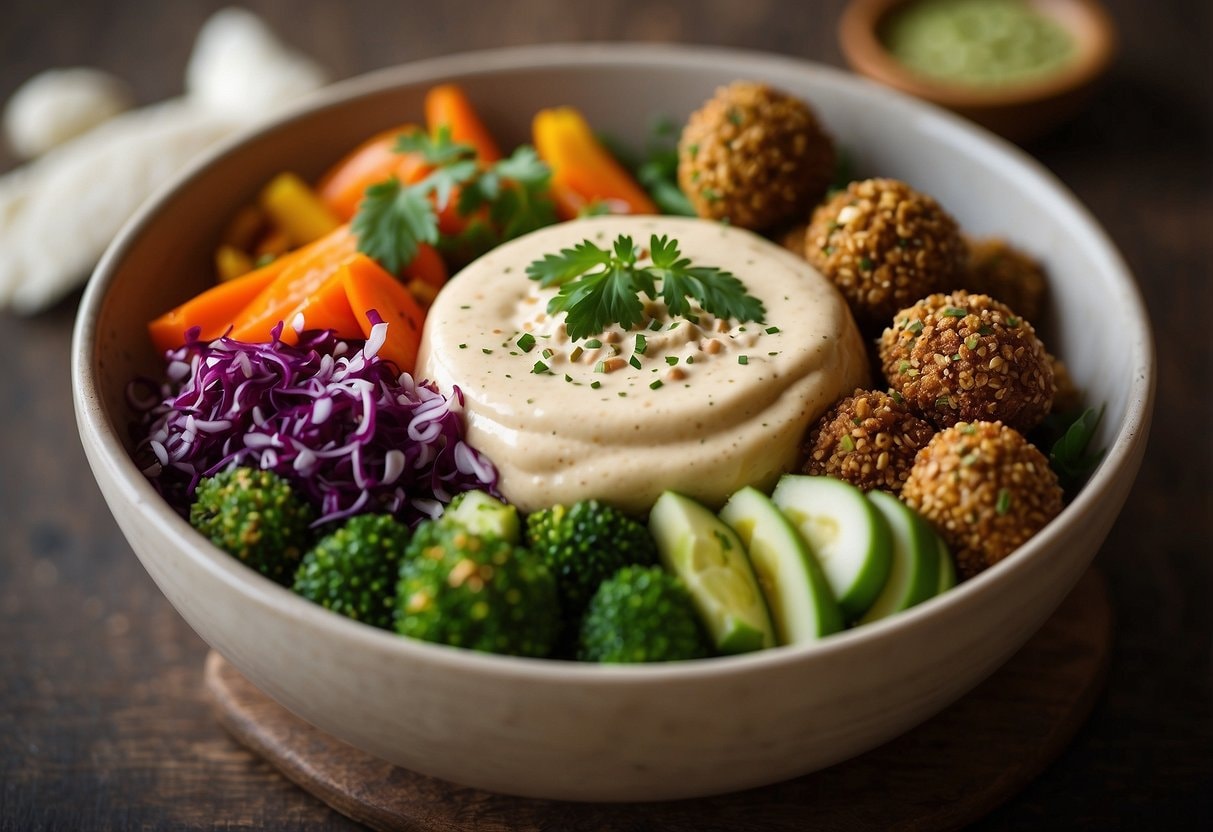
Ready to dive into a tasty and healthy meal? Look no further than a Vegan Mediterranean Buddha Bowl. This wonderful dish is brimming with nutritious ingredients such as quinoa, chickpeas, and an assortment of vibrant vegetables. This bowl is a great choice whether you’re aiming for a healthy lifestyle or just love Mediterranean flavors.
I love how easy it is to customize these bowls to suit your taste. You can add creamy hummus, flavorful tabbouleh, or even some homemade baked falafels. Not only are these bowls delicious, but they’re also high in protein and fiber, making them a filling meal option.
Ready to get started? Join me in exploring the essential ingredients, step-by-step recipes, and creative ways to make your bowl pop with flavor and color. You’ll soon see why this dish is a favorite in my kitchen.
Key Takeaways
- Packed with wholesome ingredients like quinoa, chickpeas, and fresh vegetables, the Vegan Mediterranean Buddha Bowl offers a delectable way to savor a nutrient-packed meal.
- Easily tailored to personal tastes with options like creamy hummus, flavorful tabbouleh, or homemade baked falafels, allowing for endless variations while maintaining nutritional value.
- Delivers a hearty meal that keeps you feeling satisfied for hours, thanks to protein-rich legumes like chickpeas and fiber-packed ingredients such as quinoa and assorted vegetables.
- Supports heart health with ingredients like olive oil and vegetables rich in antioxidants, while whole grains contribute sustained energy and stable blood sugar levels.
- Simple to assemble with step-by-step instructions for selecting, preparing, and combining ingredients into a vibrant and nourishing bowl that’s both satisfying and health-promoting.
What Is a Vegan Mediterranean Buddha Bowl?
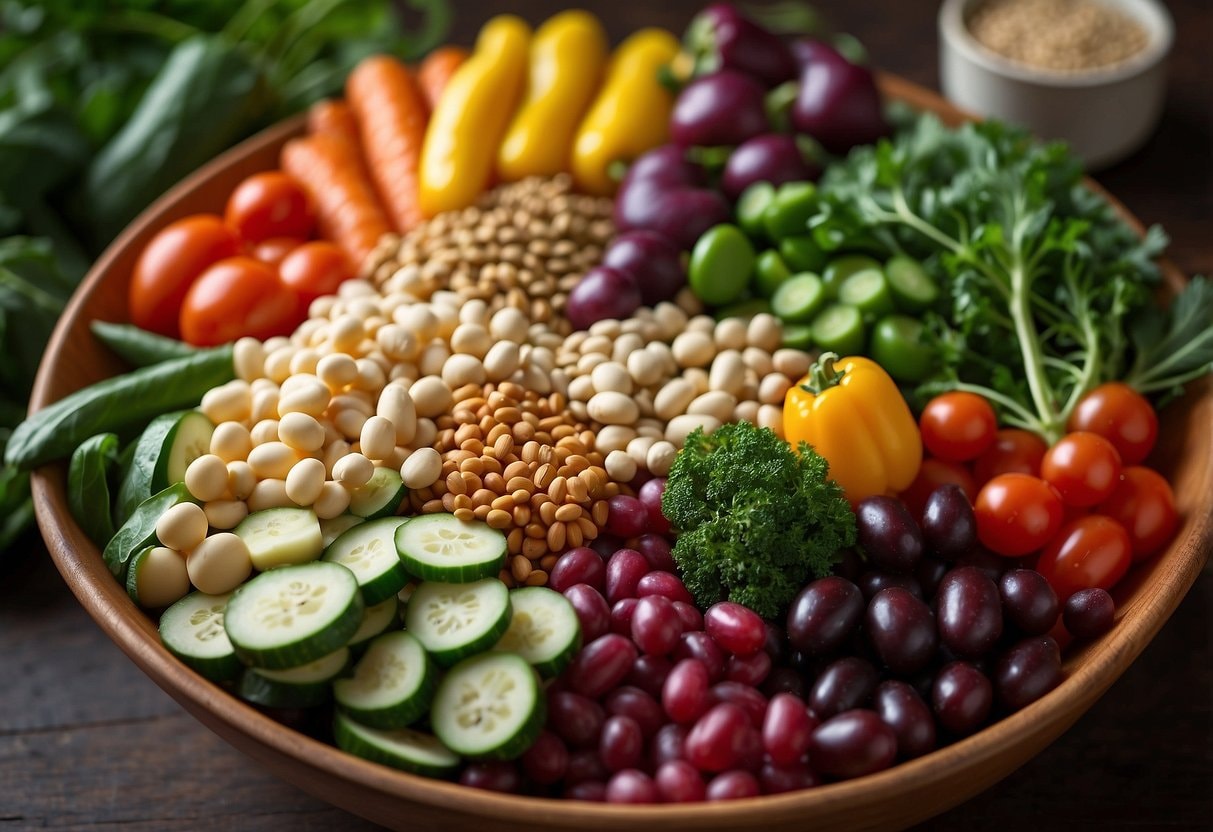
A Vegan Mediterranean Buddha Bowl brings together fresh, vibrant ingredients. It typically includes whole grains like quinoa or rice and various vegetables such as cucumbers, tomatoes, and red onions. Protein comes from chickpeas or beans. Healthy fats are added with items like avocado and olives.
Common Ingredients
- Grains: quinoa, brown rice
- Vegetables: cucumbers, tomatoes, lettuce, red onions
- Proteins: chickpeas, lentils
- Healthy Fats: avocado, olives, hummus
Enhance the flavor by incorporating your favorite herbs and spices. Common choices are basil, garlic powder, and rosemary. Another popular topping is pesto, which adds a wonderful taste to the bowl.
One of my favorite recipes uses roasted chickpeas, seasoned with olive oil and garlic powder. You can customize your bowl by incorporating ingredients you love. I love mixing in some spiralized zucchini, which you can cook with olive oil and herbs until tender.
Health Benefits of Vegan Mediterranean Diet
Eating a vegan Mediterranean diet can improve your health in several ways. This diet includes fruits, vegetables, whole grains, and healthy fats, making it very nutritious.
One of the main benefits is that it helps your heart. The high amount of fruits and vegetables provides fiber and antioxidants. These nutrients can lower cholesterol and blood pressure.
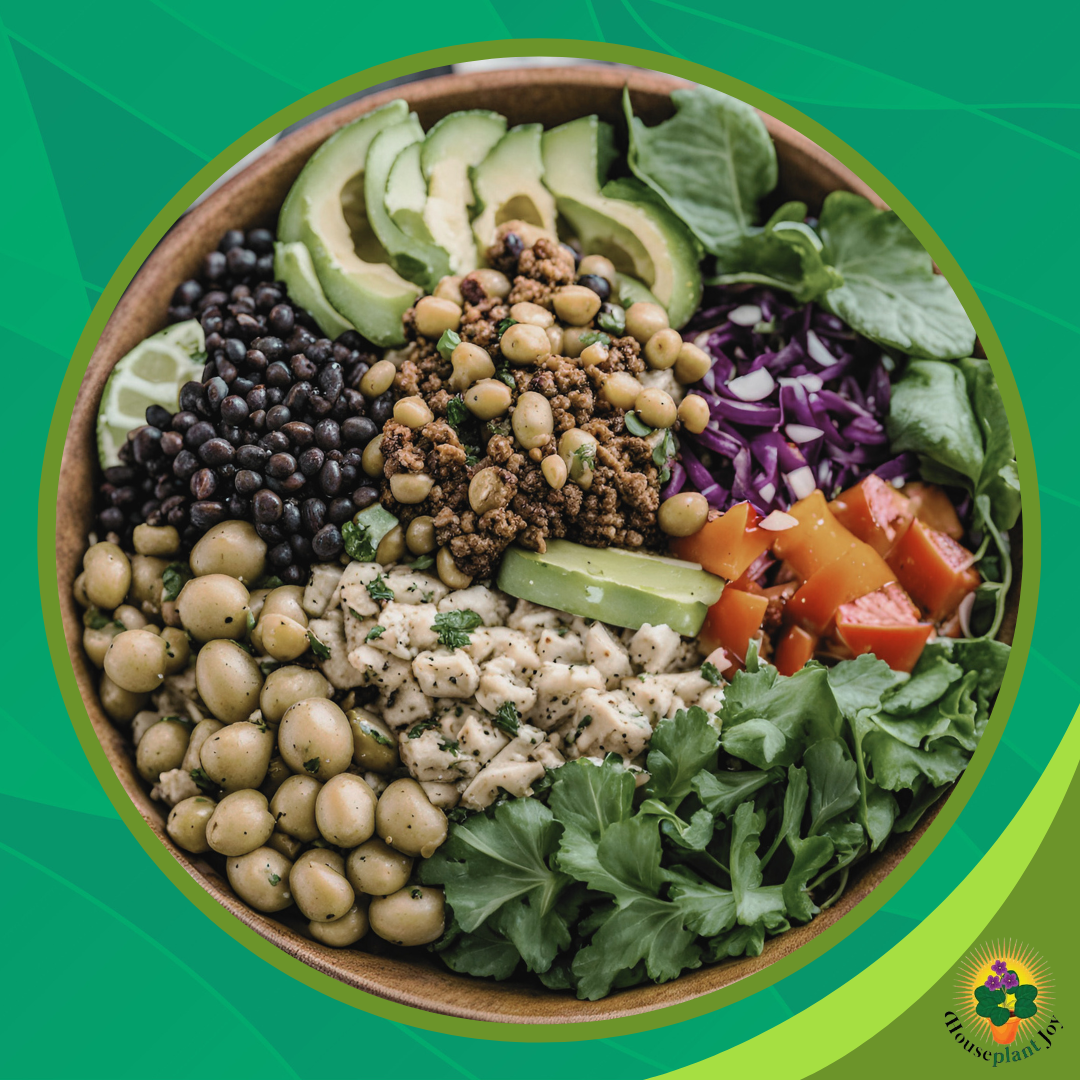
Antioxidants
- Found in fruits and veggies
- Protects cells from damage
- Reduces inflammation
Olive oil and nuts contribute beneficial healthy fats that support heart health. They contribute to increasing beneficial cholesterol (HDL) while reducing harmful cholesterol (LDL).
Healthy Fats
- Olive oil: rich in monounsaturated fats
- Nuts: provide omega-3 and omega-6 fatty acids
Also, eating whole grains like quinoa and brown rice gives you sustained energy and keeps your blood sugar stable. These grains boast high fiber content, which supports digestion and helps you feel fuller for longer.
Whole Grains
- Quinoa
- Brown rice
Protein from plant-based sources like beans, chickpeas, and tofu is another plus. These proteins help build and repair your muscles devoid of the saturated fats typically present in animal-derived products.
Plant-Based Proteins
- Beans
- Chickpeas
- Tofu
In addition to these physical benefits, the diet can also improve your mood. Eating nutrient-rich foods can boost brain health, which helps manage stress and anxiety.
Here’s a video about a Mediterranean bowl recipe.
By: HOPE Foods
Essential Ingredients for a Buddha Bowl
I love crafting a delicious Vegan Mediterranean Buddha Bowl. It’s all about fresh, vibrant ingredients. Here are the essential items required to create one.
Base
Start with a hearty base. I often use quinoa, rice, or a mix of lettuce and greens. This sets the stage for all the tasty toppings.
Protein
For protein, I roast chickpeas with olive oil, basil, and garlic powder. You can also add tofu, which I coat with a savory paste.
Vegetables
Vegetables are a must. I like to include:
- Cucumbers cut into half moons
- Cherry tomatoes sliced in half
- Red onion thinly sliced
- Bell peppers cut into strips
Healthy Fats
Don’t forget healthy fats! Include sliced avocado and a generous handful of olives. These add a creamy texture and rich flavor.
Extras
Top it off with something special. I usually add:
- A dollop of hummus
- A sprinkle of salt and pepper
- A squeeze of lemon juice
Step-by-Step Recipe Guide
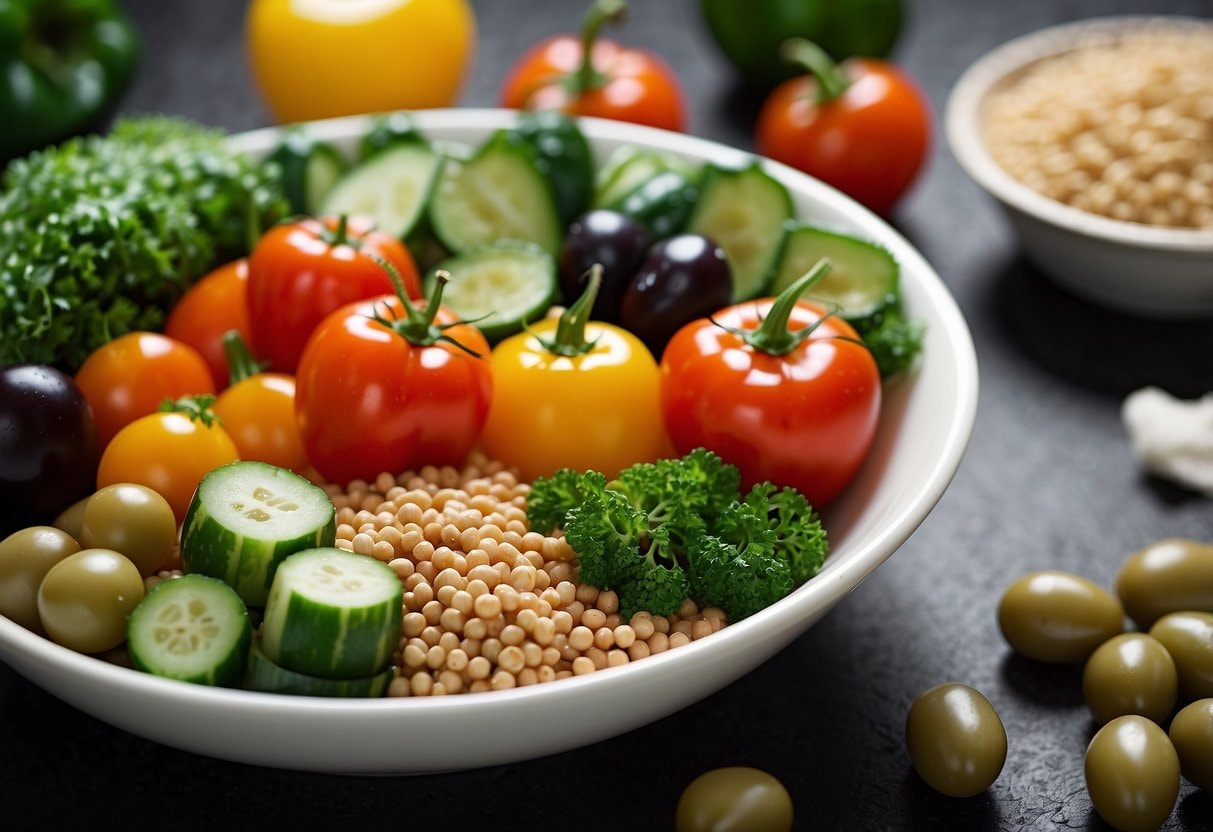
Making a Vegan Mediterranean Buddha Bowl involves choosing your greens, selecting proteins like chickpeas or tofu, incorporating whole grains, adding healthy fats such as avocado, and mixing in a variety of colorful vegetables. Don’t forget to top it off with homemade dressings and sauces to bring it all together.
Choosing Your Greens
I like to start with fresh greens as the base for my bowl. Mixed greens, spinach, or kale work really well. Each type of green brings its own flavor and texture.
Use a mix to keep things interesting. For a more peppery taste, try adding arugula. Ensure the greens are washed and dried well. This helps the other ingredients stick better.
Consider using a salad spinner to dry your greens thoroughly. Too much moisture can make your bowl soggy. After drying, chop or tear the greens into bite-sized pieces.
Selecting Vegan Proteins
Proteins are essential in making the bowl hearty and filling. Chickpeas are my go-to because they roast well and add a nice crunch. Coat them with olive oil and spices, then bake until they’re wonderfully crisp. Tofu is another great option.
Marinate it with Mediterranean spices and then bake or grill it. You can also use lentils or black beans for variety. Make sure to prepare whatever you choose so they add flavor and texture to your bowl.
Incorporating Whole Grains
Whole grains help balance the bowl and make it more filling. Brown rice, quinoa, and farro stand out as excellent options. Cook the grains according to package instructions, making sure they are not too mushy.
Quinoa is my personal favorite because it cooks quickly and has a light, fluffy texture. Adding a pinch of salt while cooking can enhance the flavor. Include these in your bowl for a nutritious boost of fiber and protein.
Adding Healthy Fats
Healthy fats are important for flavor and for keeping you full. Avocado slices are a crowd favorite. Simply slice and scoop them into your bowl.
Olives also add a rich, salty flavor. Choose either black or green olives, but always opt for pitted ones to save time. For an added touch of richness, consider drizzling some olive oil or tahini sauce.
Variety with Vegetables
Colorful vegetables not only make your bowl look appealing but also add different nutrients. Cucumbers, tomatoes, and bell peppers are fresh and crunchy choices.
For a bit of sweetness, I sometimes add roasted red peppers or grilled zucchini. Thinly sliced red onions provide a sharp contrast to the other flavors. Remember to mix raw and cooked vegetables for varied textures.
Homemade Dressings and Sauces
A good dressing can bring all the elements of your bowl together. I prefer a tahini-based dressing. Mix tahini with lemon juice, garlic powder, and a bit of water until smooth.
Another option is a simple olive oil and balsamic vinegar mix. Blend fresh herbs such as parsley or mint into dressings to enhance their flavor profile. Pour the dressing just before serving to keep everything fresh and crisp.
Creating a balanced and delicious Vegan Mediterranean Buddha Bowl is effortlessly achieved by combining and pairing these components.
Did You Know?
A good dressing can elevate your bowl. Mix olive oil, lemon juice, garlic powder, and a pinch of salt and pepper. You can also add a bit of tahini for a creamier texture. ext, blend the ingredients thoroughly until they form a smooth mixture.
Customizing Your Buddha Bowl
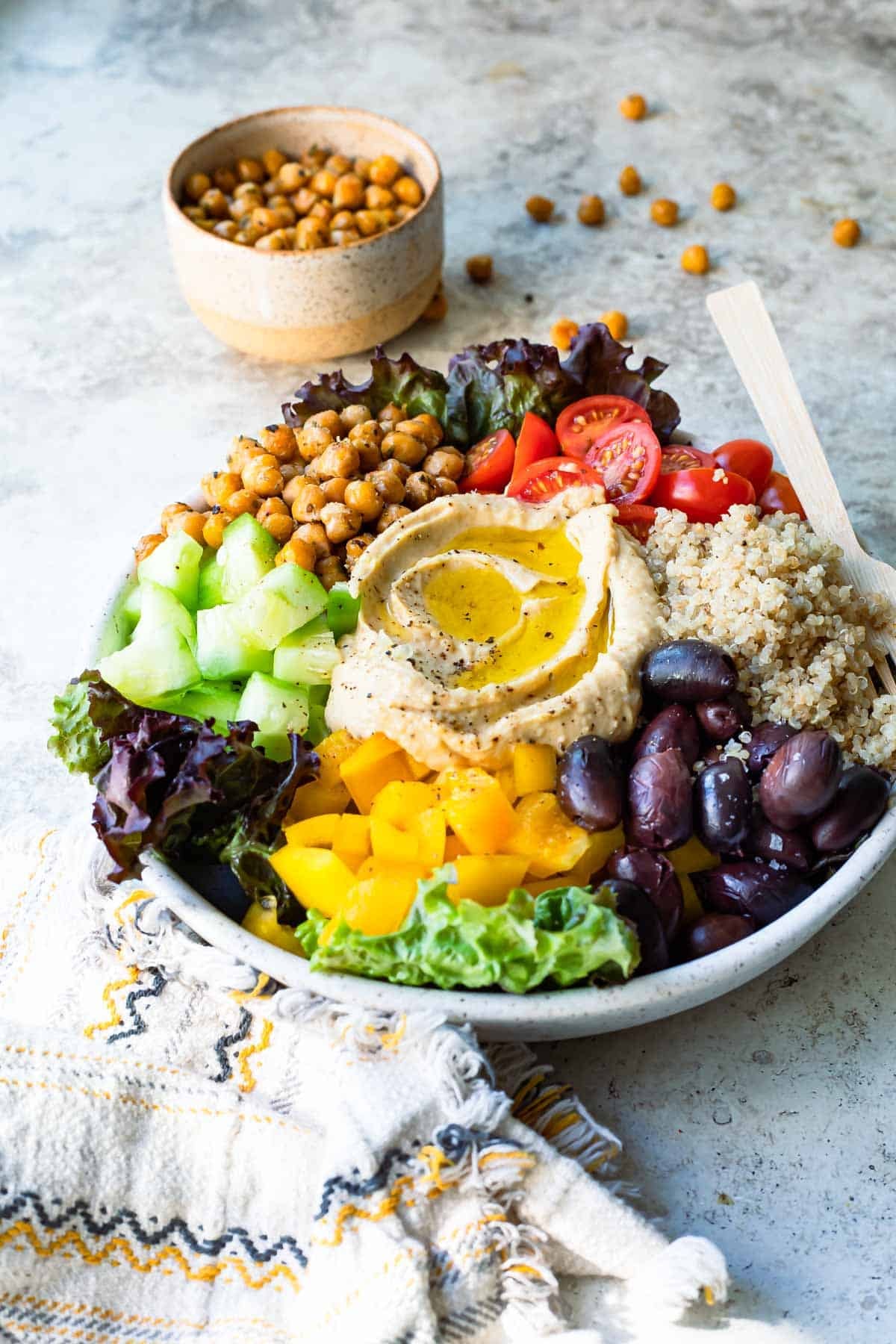
When customizing your Vegan Mediterranean Buddha Bowl, it’s helpful to consider gluten-free options, allergen-friendly substitutions, and seasonal variations. These choices can help you make a bowl that fits your dietary needs and preferences without sacrificing taste.
Gluten-Free Alternatives
For a gluten-free Buddha bowl, start by choosing a base like quinoa, rice, or gluten-free grains. The Bianca Zapatka recipe uses quinoa, which is naturally gluten-free and rich in protein. Ensure other ingredients like olives and spices are also gluten-free.
I also like to substitute traditional soy sauce with tamari, a gluten-free alternative. It offers the same savory flavor without the gluten. Always double-check labels on all packaged items to avoid hidden gluten.
Allergen-Friendly Substitutions
You can still enjoy a tasty Buddha bowl if you have food allergies. For example, if you’re allergic to nuts, you can replace them with seeds like sunflower or pumpkin seeds for added crunch. The Best Served Vegan recipe includes fresh veggies and hummus, which are generally safe for most allergies.
You can use coconut aminos to replace soy sauce if you have a soy allergy. For those with dairy allergies, make sure your hummus is dairy-free. If you need to avoid garlic or onions, try herbs like basil or parsley to add flavor.
Seasonal Variations
Seasonal ingredients can make your Vegan Mediterranean Buddha Bowl fresher and more flavorful. In summer, ripe tomatoes, cucumbers, and bell peppers are perfect. The All Natural Vegan suggests adding fresh avocado for a creamy texture.
In the fall, switch to roasted root vegetables like sweet potatoes, carrots, and beets. These veggies add warmth and depth to your bowl.
In winter, try using hearty greens like kale and warm grains like farro. Springtime is great for adding new potatoes, asparagus, and peas. These ingredients bring a fresh, crisp taste that matches the season. Mix and match based on availability and preference to keep your bowls exciting all year round.
Plating and Presentation Tips
When presenting a Vegan Mediterranean Buddha Bowl, I like to think of it as an art form. Here are some tips that help make every bowl look as good as it tastes.
Colors
Color coordination is key. Use a variety of vegetables like bright red tomatoes, green cucumbers, and deep purple onions. This makes the bowl not only tasty but also visually appealing.
Arrangement
Arrange the components neatly and separately. Instead of mixing everything together, I like to place each ingredient in its own section. This can create a beautiful, organized look.
Layering
Layering is important. Start with a base like quinoa or rice. Then, add a layer of greens. Finally, top with the more colorful veggies, beans, and garnishes. Using a large bowl helps keep the ingredients from crowding. This allows each item to stand out on its own. Include some garnishes for extra flair. Fresh herbs, a dash of seeds, or a light drizzle of olive oil can provide the perfect finishing touch.
Right Texture
Texture matters too. Combine crunchy elements like cucumbers and radishes with softer ones like avocado and hummus. This makes the bowl more interesting to eat.
Consider serving the bowl with a lemon wedge or a dollop of vegan feta for added visual impact. These minor details can have a significant impact.
Pairing with Beverages
When I enjoy a Vegan Mediterranean Buddha Bowl, I love pairing it with the right beverages to enhance the flavors.
Fresh Juices
- Lemonade: Tangy lemonade refreshes the palate and complements the bright, fresh flavors.
- Pomegranate Juice: Adds a sweet-tart contrast that’s perfect with the savory elements.
Teas
- Iced Mint Tea: Cool and herbaceous, mint tea pairs well with Mediterranean spices.
- Green Tea: Light and earthy, green tea provides a mellow counterbalance.
Smoothies
- Cucumber and Mint Smoothie: This smoothie is crisp and hydrating, perfect for a light meal.
- Avocado and Banana Smoothie: Rich and creamy, it adds smoothness without overpowering the bowl’s freshness.
Plant-Based Milks
- Almond Milk: Its subtle nutty flavor works well.
- Oat Milk: Creamy and sweet, oat milk can be enjoyed on its own or as a base for smoothies.
Sparkling Water
For a simple and refreshing choice, sparkling water with a hint of lemon or cucumber can freshen the palate and maintain a light feel.
Wine
If you’re seeking something with a touch of uniqueness:
- Sauvignon Blanc: Crisp and slightly acidic, it complements the fresh vegetables and flavors.
- Pinot Grigio: Light and zesty, an excellent match with Mediterranean cuisine.
Storing and Meal Prep Advice
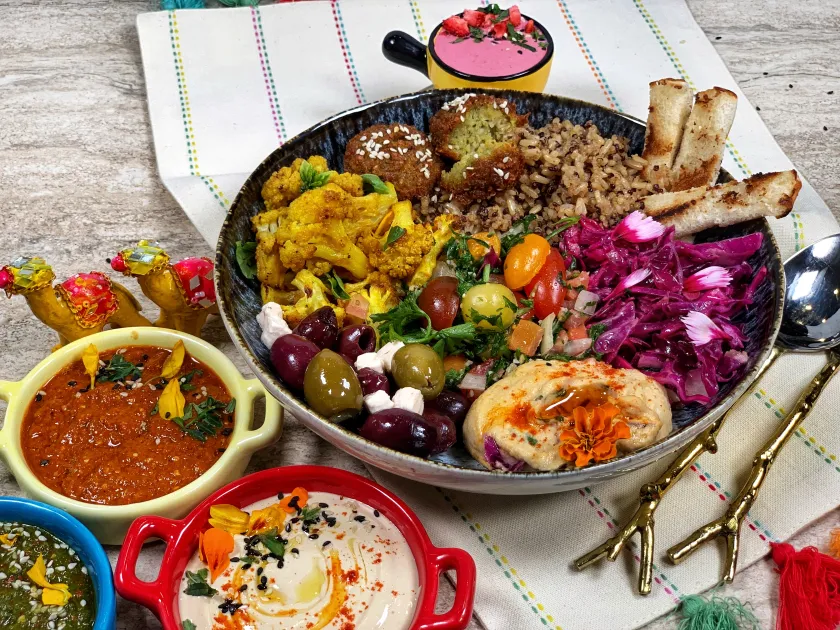
When it comes to meal prep for a Vegan Mediterranean Buddha Bowl, organization is key. I like to start by getting all my ingredients ready. This makes everything super easy when it’s time to assemble the bowls.
Here’s What I Do:
First, cook the quinoa ahead of time. Quinoa can stay fresh in the fridge for up to four days. I store it in an airtight container. For the roasted sweet potatoes, after they cool, I pack them in a separate container. Roasted vegetables typically maintain their freshness in the refrigerator for approximately five days. Chop the veggies like cucumbers, tomatoes, and red onions. Keep them in individual containers. This method ensures they stay fresh and maintain their crispiness.
Store dressings in small mason jars. This ensures they don’t make the veggies soggy before you’re ready to eat. Tahini dressing works great for this. As for the greens, I wash and dry them very well before storing them in a salad spinner or a separate container with a paper towel to soak up excess moisture.
Pro Tips:
- Label Your Containers: I find it helpful to label my containers with the date I prepped the food.
- Batch Cooking: If you’re planning for the week, make a double batch of quinoa and roasted veggies.
- Build as Needed: I suggest separating the components until you’re ready to eat, then assembling the bowl. This keeps everything tasting fresh.
Sustainable Cooking and Eating Practices
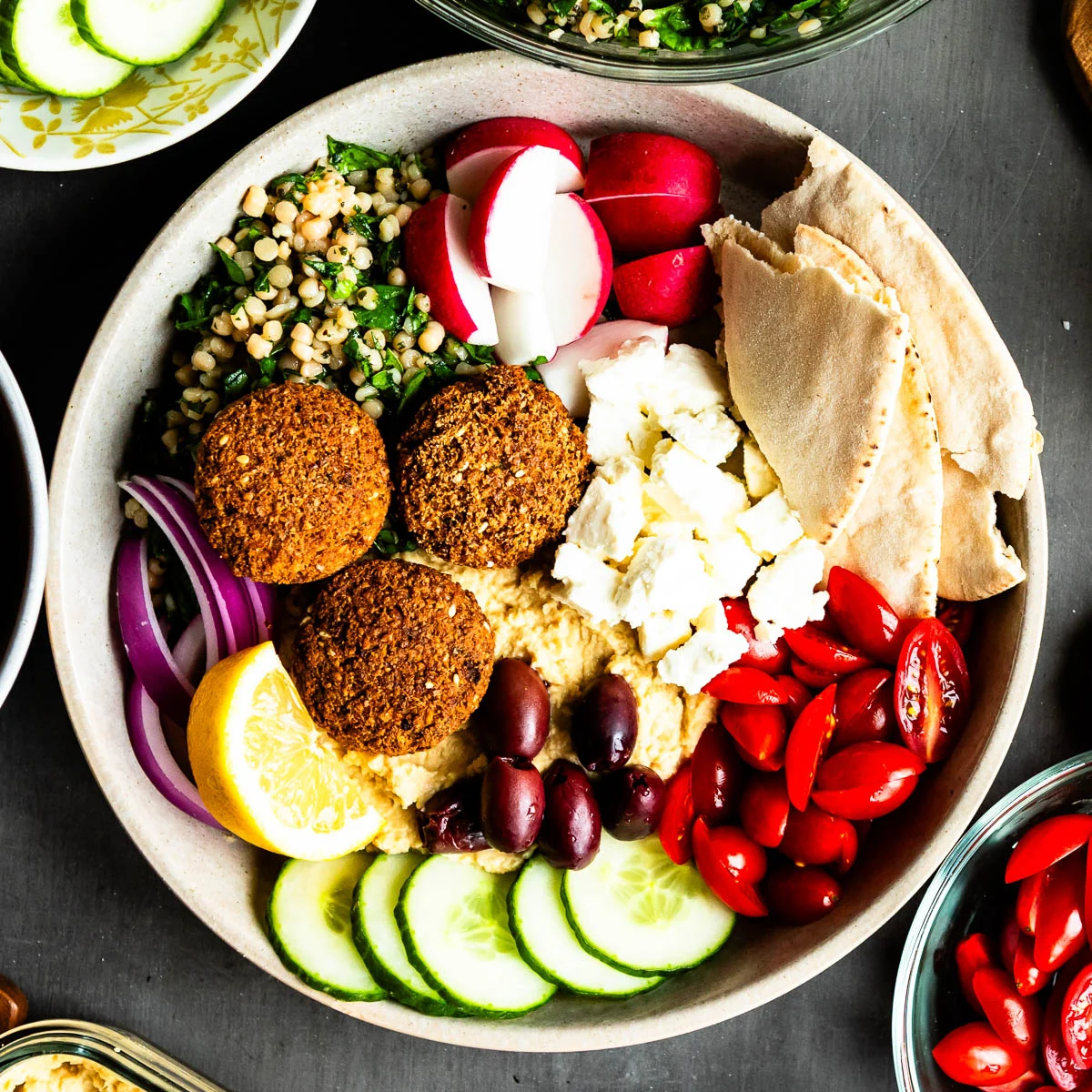
When I think about sustainable cooking and eating, a few key points come to mind. It’s about making choices that are good for the planet, our health, and future generations. Here are some practices I follow:
Choose Local and Seasonal Produce
Consuming locally sourced seasonal fruits and vegetables helps minimize carbon emissions. Local produce doesn’t travel far, which means fewer emissions from transportation.
Reduce Food Waste
I always try to plan my meals ahead. Using leftovers creatively helps cut down on food waste. For example, extra chickpeas from my Vegan Mediterranean Buddha Bowl can be used in a salad the next day.
Use Reusable Containers
Using reusable bags and containers is a small change that makes a big difference. It cuts down on the plastic waste that ends up in our oceans and landfills.
Plant-Based Eating
Eating more plant-based meals, like my favorite Vegan Mediterranean Buddha Bowl, is better for the environment. Plant-based diets use fewer resources and generate less pollution compared to animal-based diets.
Energy-Efficient Cooking Methods
I try to cook with energy-efficient appliances. For instance, using a pressure cooker or slow cooker can save energy compared to using an oven.
Composting
Composting food scraps like vegetable peels and coffee grounds turns waste into nutritious soil. This practice enriches my garden and reduces the amount of trash I send to the landfill.
Here’s another video about a Mediterranean bowl.
By: Alfocado
Embrace Health and Flavor with Your Vegan Mediterranean Buddha Bowl
The Vegan Mediterranean Buddha Bowl isn’t just a meal—it’s a celebration of fresh flavors and nourishing ingredients that invigorate both body and soul. Whether you’re a committed vegan or simply seeking a healthier lifestyle, this bowl offers a gateway to culinary satisfaction and wellness. With its blend of hearty grains, vibrant vegetables, protein-packed legumes, and tantalizing spices, each bite promises a journey of taste and nutrition.
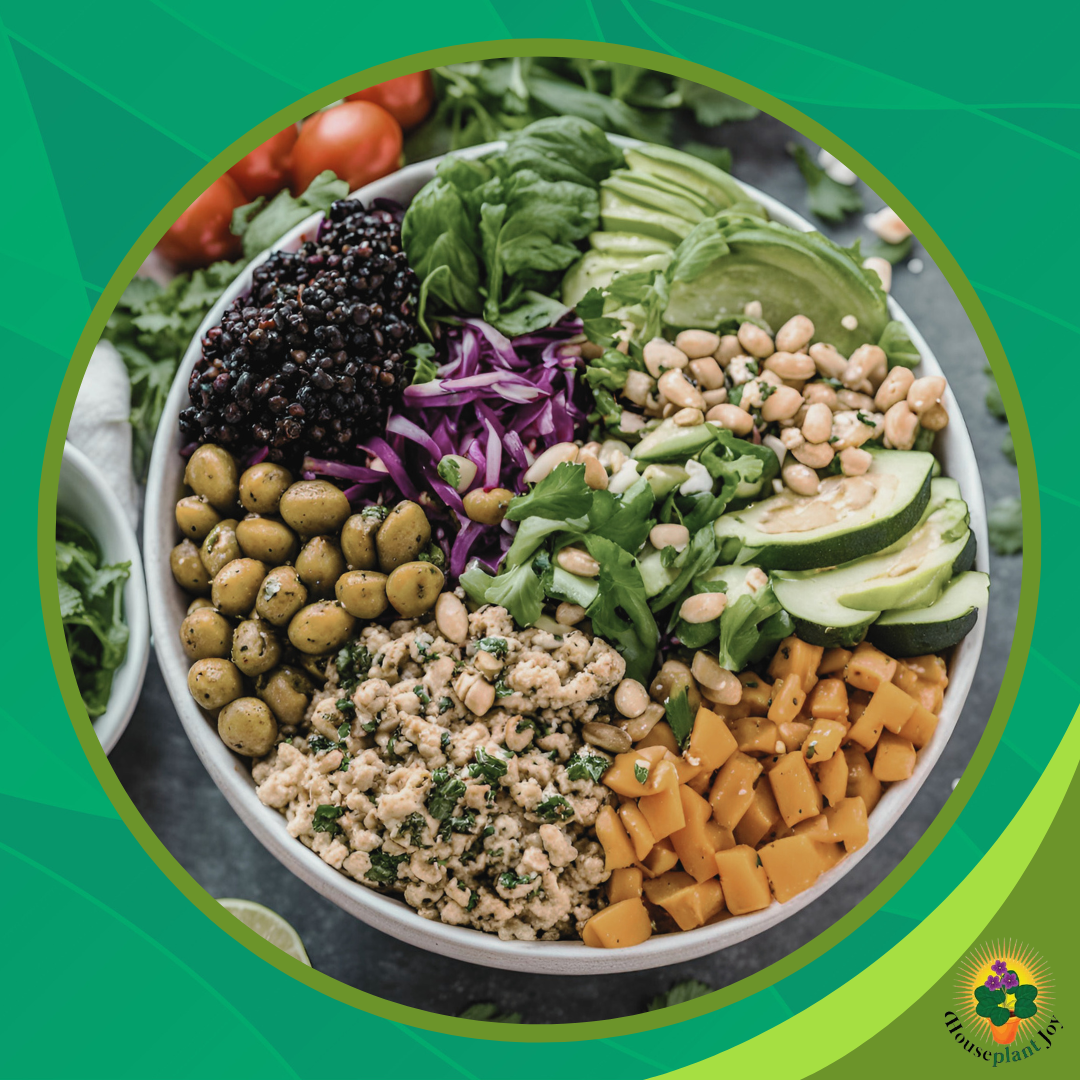
By crafting your own Buddha bowl, you indulge in deliciousness and embrace a lifestyle that supports your well-being. From customizable toppings to nutrient-rich components, every element of this bowl is designed to enhance your dining experience and elevate your health. Join us in savoring the joy of wholesome eating—where every bowl is a testament to the art of living well.
Frequently Asked Questions
What Are the Essential Ingredients for a Vegan Mediterranean Buddha Bowl?
Cucumbers, cherry tomatoes, olives, bell peppers, and lettuce are essential. You can also include tofu blocks or roasted chickpeas. Rice or quinoa is usually used as a base. Adding a dollop of hummus at the end is a nice touch.
Can You Suggest Some Healthy Toppings for a Vegan Mediterranean Buddha Bowl?
Healthy toppings include avocados, red onions, radishes, and pickled onions. You can also add feta-style tofu and fresh herbs like basil or parsley. Roasted sweet potatoes or chickpeas add a nice crunch.
What Distinguishes a Buddha Bowl From a Nourish Bowl?
Buddha Bowls and Nourish Bowls can seem similar, but they differ in their focus. A Buddha Bowl generally has a mix of raw and cooked veggies, grains, and a protein source. Meanwhile, Nourish Bowls often emphasize superfoods and may include more varied textures and flavors.
Ready to Start Your Vegan Journey? Follow Us on Social Media!
Visit our accounts for delicious vegan recipes, nutritional tips, and inspiring stories from the vegan community. Join us and become part of a vibrant and compassionate network dedicated to healthy and sustainable living!
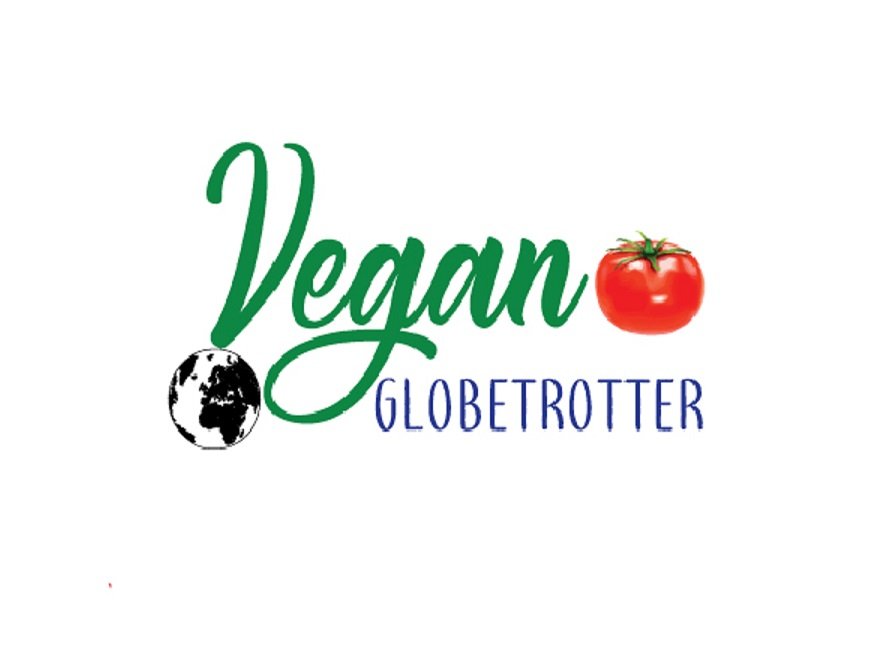

Don't miss out
when new recipes and information are added!
Join our newsletter for free recipes,
healthy living inspiration, and special offers
You have Successfully Subscribed!